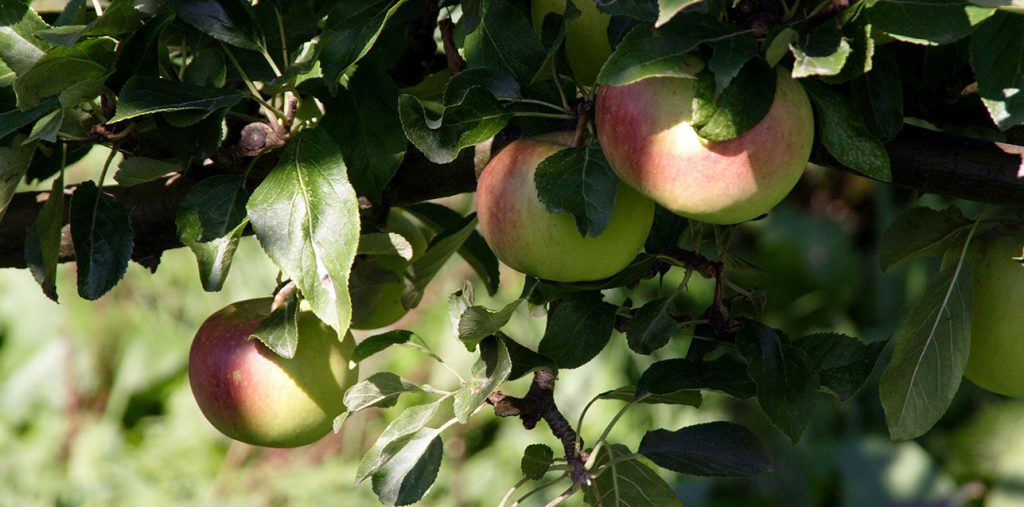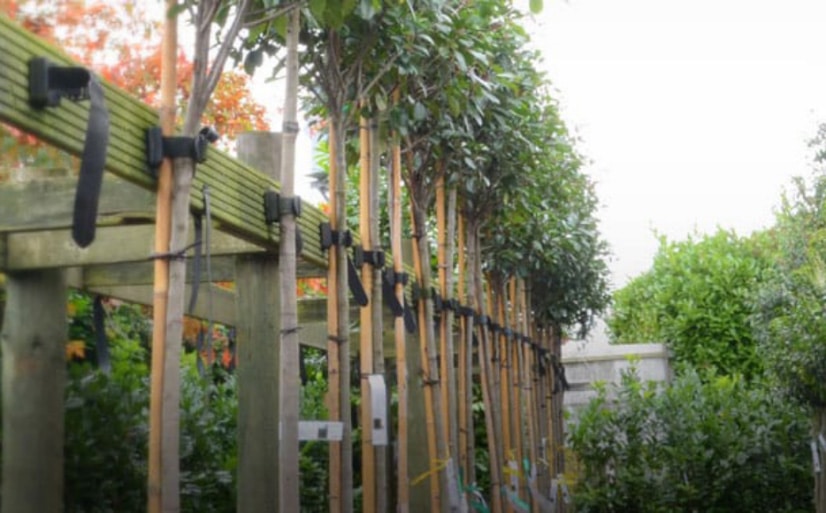If you want to see the best results from your newly planted tree it’s essential to provide the right care, especially in its early years! From soil preparation to proper watering techniques and maintenance, these tree care tips will help to support healthy tree growth.
1. Soil Preparation
For the best results, we recommend improving the soil quality of the planting site before installation. You can do this by digging larger holes and incorporating multi-purpose compost and organic matter, such as well-rotted animal manure, into the backfill. If the drainage is poor, it is better to completely replace the soil and add a 2-3 inch layer of pea shingle at the bottom of the holes. This will help improve drainage and ensure that the tree roots are not sitting in water.
Once you are ready to plant, you can apply a rootgrow mycorrhizal fungi at the base of the planting pit. This supports root development, eases transplant shock, and improves nutrient uptake. You can also mix a slow-release fertiliser into the backfill soil at planting time. This gives your tree a nutritional boost over time, promoting healthy root growth, flowering, fruiting, and improved drought tolerance.
2. Staking
Tree staking is crucial for successful tree planting, as it protects the roots during establishment and keeps the tree upright and stable. You have the option to single or double stake your trees. Single staking is suitable for less exposed sites, while double staking is recommended for windier areas.
We have created a step-by-step video guide that demonstrates the double staking method for trees. If you’re concerned about doing this yourself, we offer a professional planting service where our highly trained team will install your plants with all the necessary accessories. Please note that this service is available only to customers who do not require soil improvement, as we use only spades and no machinery.
Watering Newly Planted Trees
Proper watering is crucial for the growth and health of your tree. Keeping the soil moist will aid root development and help trees cope with environmental stressors such as heatwaves and dry spells.
When?
Water in the early morning or evening. Morning watering allows the tree to absorb moisture during the day, while evening watering minimizes water loss due to evaporation. Avoid watering during the heat of the day, as much of the moisture will evaporate before reaching the roots.
How often?
Consistent, thorough watering is key to keeping moisture levels stable. As a guide we recommend that you give each tree approximately 5 litres of water every second day (over the growing season). This volume should keep the soil consistently moist, but you should regularly check the soil to make sure it’s not getting too wet or too dry.
Its important that the trees are not over or under watered. If the soil dries out it can cause stress to the tree, if it becomes oversaturated then the roots will not be able to access oxygen in the surrounding soil. In these instances adjust the volume as required. Please note that rainfall is often insufficient, especially during dry periods.
How to water?
Direct water at the base of the trunk, ensuring it soaks into the soil around the roots. Avoid watering the leaves, as this can cause fungal issues or leaf scorch. Use a rose attachment on your hose or watering can to reduce runoff and help water absorb more effectively.
For added convenience, consider installing a tree watering bag or using a root rain irrigation system. These tools deliver water slowly and directly to the root zone, encouraging deep root growth and long-term resilience. Tree watering bags are especially helpful if you’re going away on holiday!
Maintenance Tips: Pruning
Regular pruning helps shape the tree, encourages bushier growth, and removes dead or damaged branches.
When should I prune?
Late Spring to Early Summer (after flowering): Encourages the trees to become bushier with more branches. When you trim each branch, aim to remove no more than one-third of its total length. This method helps promote denser growth in the lower and central parts of the plant.
Early September: Shorten any particularly long branches by up to one-third. This pruning session helps to tidy up the plant and establish a nice, even shape for new growth in the spring. Pruning around this time also allows any new shoots to become more resilient before the arrival of winter frosts (don’t prune much later than this).
Other maintenance tips
1. Keep the area around the base of your tree weed-free to reduce competition for water and nutrients.
2. Apply a slow-release feed and mulch as a top dressing. This will add nutrients to the soil, help retain moisture, and regulate soil temperature. Just be sure not to pile the mulch against the tree stem.
Hopefully This Helped!🌿
By following these tree care tips, you can give your tree the strong start it needs and enjoy the benefits of healthy growth for years to come!






